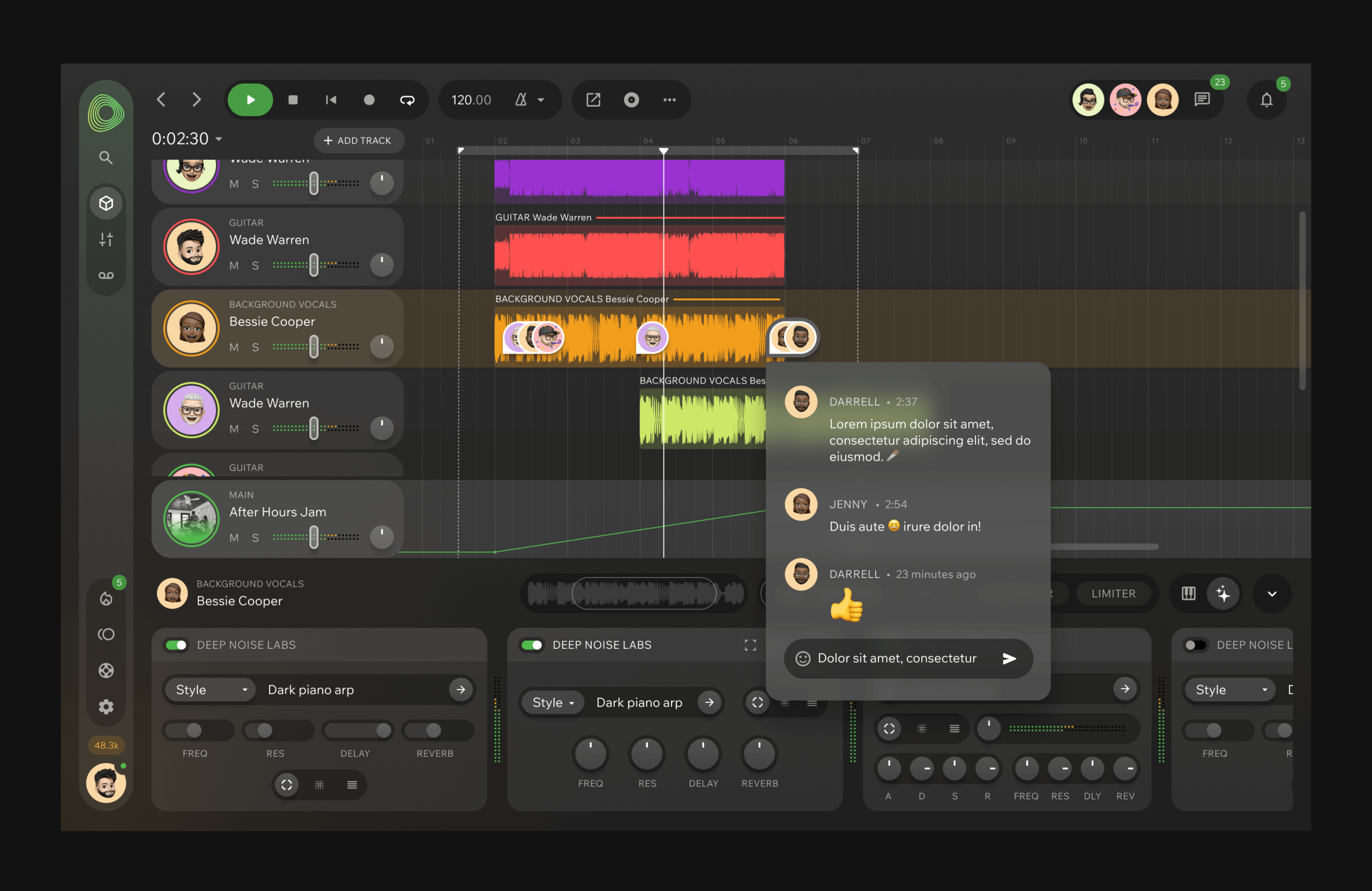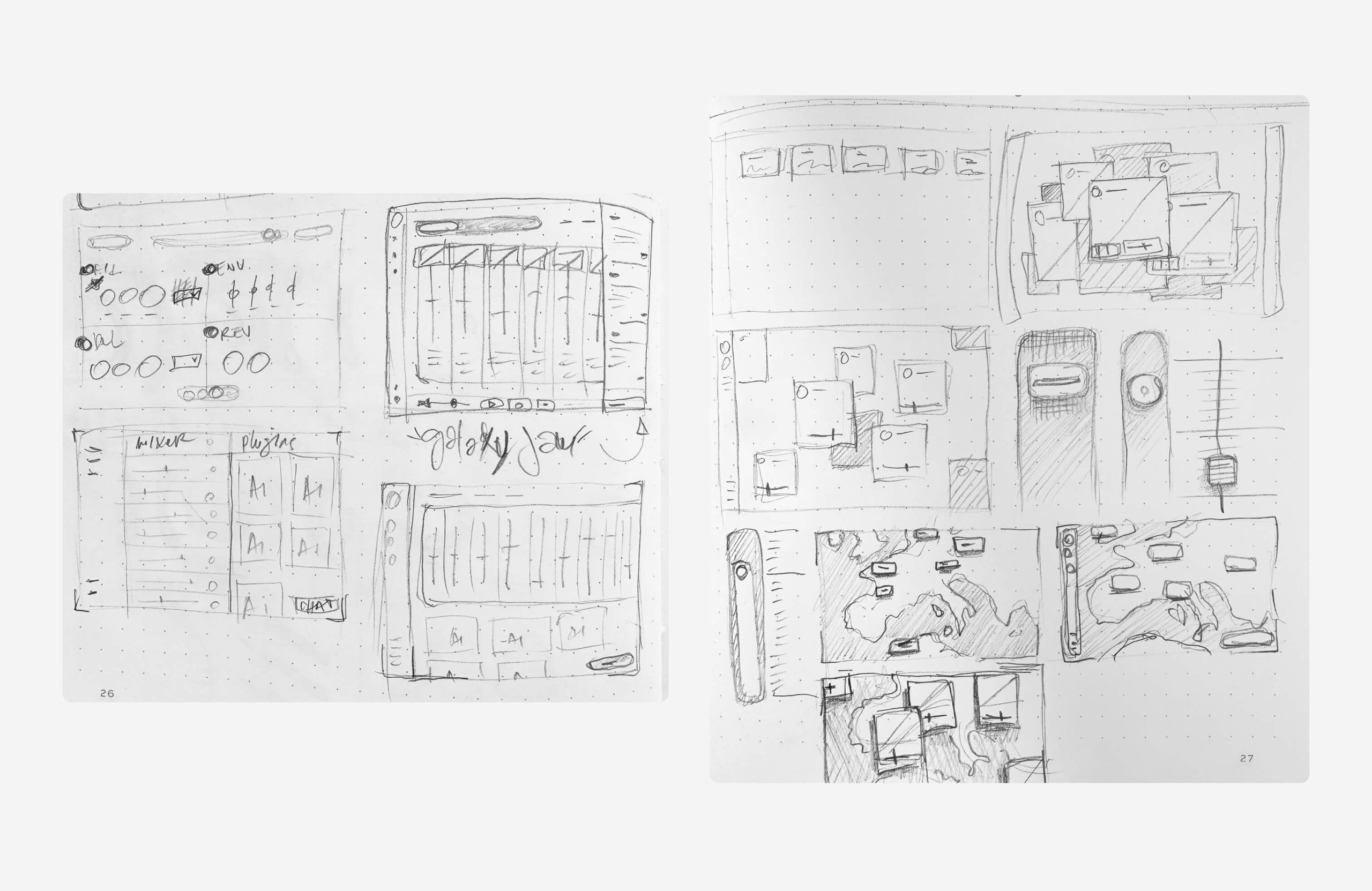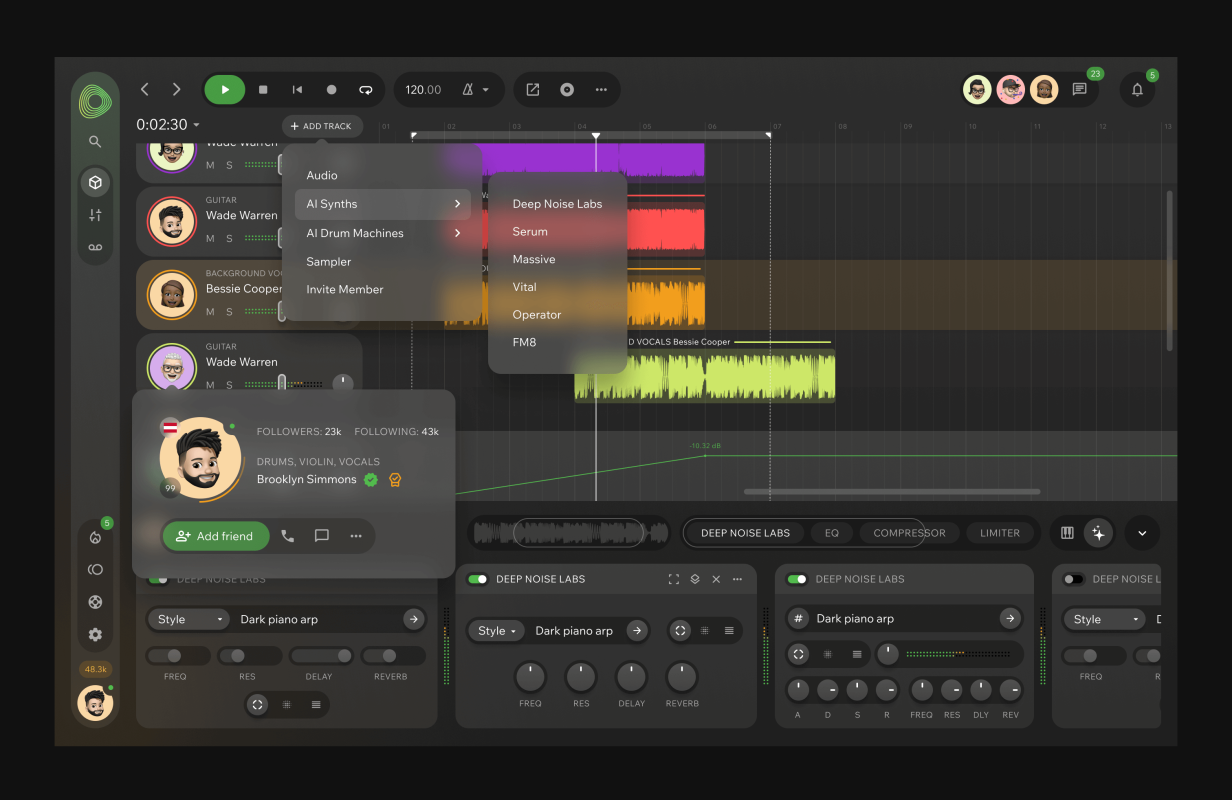Date: 2024
Jam Galaxy is a decentralized, low latency music collaboration platform that enables real time jamming, multitrack recording, and on the fly editing within a web based DAW environment, integrating AI music tools for sound generation and a token based economy with gamified elements to serve casual musicians and stakeholder monetization goals.
Sketches and inital concepts
To start, I sketched out rough layouts in my notebook to figure out how to fit all the key features Jam Galaxy needed, live jamming, recording, editing, AI integrations, social profiles, and crypto related options. The main challenge was organizing these complex functions in a way that would feel simple and intuitive for casual musicians. I explored different layout structures, arrangements of key sections, and how users might move between creative and social parts of the platform.
Wireframes and setting up
Before jumping into wireframes, I spent time building a basic information architecture to organize all the core parts of the platform. This helped me understand how to connect live jamming, recording, editing, AI sound tools, user profiles, and crypto based features into one logical flow. Once the structure was clear, I chose fonts and colors to define the visual tone, keeping it clean, modern, and accessible for musicians. With that in place, I started drawing low fidelity wireframes to test screen layouts and how users would navigate between different parts of the app.
Design explorations
After setting the foundation, I explored a wide range of mockups and design directions. I generated a large volume of ideas, constantly refining and testing different approaches. Throughout this process, I had regular back and forth sessions with stakeholders, balancing their various requests. For example, how to integrate monetization options through tokens and crypto features; while still keeping the platform usable and intuitive for musicians.
The mockups never truly locked in, they evolved continuously. I worked closely with developers to ensure feasibility, adjusting details based on technical feedback, and collaborated with stakeholders to keep each iteration aligned with their goals, balancing functionality, usability, and business requirements.
MVP
At the end, we simplified the scope for version one, deferring remaining complexity and advanced features to future phases. And that’s a story for another time. 🙂
Tracing the development from basic wireframes to fully realized designs illustrates how a structured, feedback-driven workflow refines functionality and visual hierarchy. This method ensures each interface element is purposeful and user-centered, supported by rigorous iteration and stakeholder collaboration. If you’re seeking a design process that balances creativity with precision, let’s discuss how it can apply to your next project.























